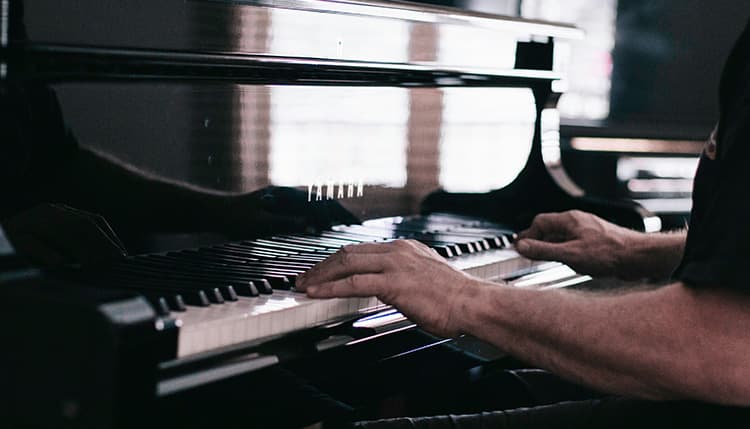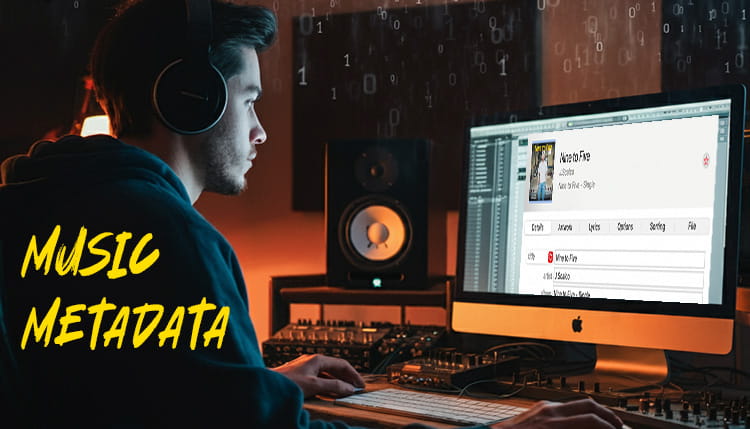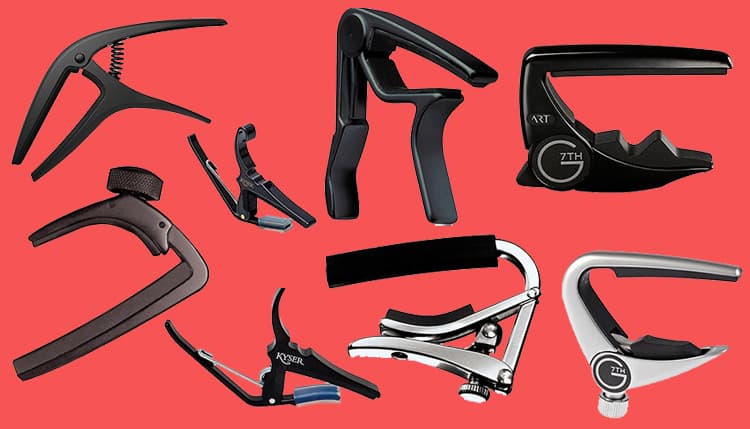Learning to play the piano doesn’t have to be overwhelming! According to a recent study by the Music Teachers National Association, students who start with simple, familiar songs are 3x more likely to stick with their piano practice.
Whether you’re sitting at the keys for the first time or returning after a break, I’ve curated the perfect collection of easy piano songs for beginners that will have you making beautiful music in no time.
Let’s explore some timeless melodies that only use basic chords and simple piano hand positions!
Easy Piano Songs for Beginners
Let’s not kid ourselves, learning the piano is a wild ride with ups and downs (mostly ups, when you get the hang of it), and picking the right tunes can really kick things off.
We’ve put together a stellar list of beginner-friendly songs, plus some gems from Reddit, to start this musical adventure.
Top Recommended Easy Piano Songs for Beginners
These tunes are a breeze with simple melodies and good vibes:
| Song Title | Artist/Composer |
|---|---|
| “Hallelujah” | Leonard Cohen |
| “Fly Me to the Moon” | Bart Howard |
| “Lean on Me” | Bill Withers |
| “My Heart Will Go On” | Celine Dion |
| “Can’t Help Falling in Love” | Elvis Presley |
| “Fur Elise” | Ludwig van Beethoven |
| “Blue Danube” | Johann Strauss II |
| “American Pie” | Don McLean |
These picks are not just chartbusters but also cover a whole bunch of styles to help us get those fingers dancing across the keys.
Easy Piano Songs Suggestions from Reddit
Who knew Reddit could dish out such great piano advice? It’s packed with tips from fellow newbies and old hands who’ve been there, done that, and have some top-notch song picks:
| Reddit Suggested Songs | Comments |
|---|---|
| “Twinkle Twinkle Little Star” | Sweet, simple, and a total classic |
| “Happy Birthday” | Handy for impressing at parties |
| “Ode to Joy” by Beethoven | Timeless and easy on the fingers |
| “Jingle Bells” | Fun and festive anytime |
| “Silent Night” | Peaceful and great for holidays |
| “Heart and Soul” | A playful number, perfect for duets |
| “Chopsticks” | Everyone’s favorite for a quick jam |
The Reddit crowd swears by starting off with songs that keep things light and fun, which can really pump up your confidence and keep motivation high.
Getting into these tunes will not only jazz up our skills but also make this whole learning thing a lot more entertaining.
Mixing classic hits and today’s chart-toppers gives us a solid taste of everything piano.
Popular Easy Piano Songs for Beginners
Starting the piano’s as thrilling as realizing you’ve got the last slice of pizza and nobody else noticed. Learning easy songs is like an amuse-bouche for your fingers.
Here are three tunes to get your fingers dancing on those keys, each nudging you closer to piano proficiency while keeping things upbeat and rewarding.
“Chopsticks”
Ah, “Chopsticks,” the tune that’s practically the musical equivalent of training wheels. You’ll mainly use just two fingers to tap out this tune, helping you figure out where each key is and how to keep a simple beat. It’s everywhere because it works!
| The Jam | Skill Level | Key Jingle Bloops | Finger Jamboree |
|---|---|---|---|
| Chopsticks | Beginner | C, D, E, G | Two fingers |
“Twinkle Twinkle Little Star”
“Twinkle Twinkle Little Star,” a sibling to “The Alphabet Song.” This ditty isn’t just for kids—it’s a sneaky way to practice scales and sheet music without your brain realizing it’s working out.
| The Jam | Skill Level | Key Jingle Bloops | Finger Jamboree |
|---|---|---|---|
| Twinkle Twinkle Little Star | Beginner | C, G, A, F | Five-finger position |
“Happy Birthday”
A cheerful ditty that comes preloaded with smiles, “Happy Birthday” is your chance to shine at every birthday bash. You get hands-on with an octave leap and a single black key (B flat). Peek at that page from your finger’s diary: a mix of melody-leading and key-hopping action.
| The Jam | Skill Level | Key Jingle Bloops | Finger Jamboree |
|---|---|---|---|
| Happy Birthday | Beginner | C, B flat, E, F | Under-the-skin play with an octave zoom |
These tunes add flavor and finesse to your skill set, giving you the essential chops you need to grow as a pianist.
Intermediate Piano Songs
So, you’ve ditched your training wheels and you’re ready to jazz up your piano skills—awesome.
We’re diving into two crowd favorites for the mid-level ivory-ticklers: “Hallelujah” by Leonard Cohen and “Havana” by Camila Cabello.
“Hallelujah” by Leonard Cohen
If there were a song you’d want a choir of angels to sing along with, “Hallelujah” sits right at the top. It’s a gem for those of us looking to step up our game with more complex chord progressions. You’ve got both hands working together here—right hand tickling the melody while the left lays down those foundational chords. Not to mention, it’s in C Major, so you’re mostly hanging out in the white keys.
| Technique | What You’re Doing |
|---|---|
| Right Hand | Playing the Melody |
| Left Hand | Basic Chords |
| Key | C Major |
| Chord Progressions | C, Am, F, G |
“Havana”
Next up, “Havana” by Camila Cabello—a song that’s a little bit of a rhythmic workout. It’s that catchy tune that’ll have your fingers dancing around the keys. With the right hand taking on a more intricate melody, the left sticks to a groove-like pattern. If you’re down for a rhythmic challenge, this one’s a must-play.
Master that repetitive left-hand pattern and, bam, the rest starts to fall into place.
| Technique | What You’re Doing |
|---|---|
| Right Hand | Detailed Tune |
| Left Hand | Repetitive Pattern |
| Key | G Minor |
| Rhythm | Off-the-Beat |
Keep those fingers flying over the keys, balancing scales, chords, and the fun stuff.
Piano Playing Techniques
Getting the hang of piano techniques is a game-changer for anyone trying to tickle the ivories. Let’s dish out some foundational tricks and practices to sprinkle a little magic on our piano skills.
Hanon Exercises
Hanon exercises are like the veggies we need on our musical plate—vital for finger strength and agility. These repetitive drills target each finger, upping our game in the speed and control department.
Most piano pros suggest diving into Hanon’s “The Virtuoso Pianist.” Imagine sixty exercises tuning us into finger fitness. It’s no surprise teachers stand by this collection as a finger finesse factory.
Check out the Hanon Excercises
Importance of Scales
Scales—think of them as the ABCs of piano playing. Practicing these is non-negotiable. They help us navigate different keys and teach our fingers to coordinate better.
Doing scales on the daily gives us that smooth-sailing feeling when moving across the keys and makes us more familiar with the keyboard setting.
| Scale Type | Number of Notes | Common Key Signatures |
|---|---|---|
| Major | 7 | C, G, D, A, E, B, F# |
| Minor | 7 | A, E, B, F#, C#, G#, D# |
On top of that, scales train our ears to understand the music notes’ happy little relationships.
Practice Chords
Chords are the secret sauce of any tune—a must-learn for budding pianists. Practicing them means we can jam out to popular piano songs to play with rich and catchy harmonies.
Kick things off with triads in your basic major and minor formats, then stretch to cooler chords like sevenths and ninths.
| Chord Type | Example | Notes |
|---|---|---|
| Major | C Major | C, E, G |
| Minor | A Minor | A, C, E |
| Seventh | G7 | G, B, D, F |
Messing around with chords also gives us insight into how songs are built and boosts our remixing skills.
Mixing these exercises into our daily practice will make piano notes for songs feel like a piece of cake and pave the way for tackling new tunes.
Essential Skills for Piano Players
When we kick things off with easy piano songs for beginners, it’s not just about hitting the right keys. We also need to get a grip on some key skills to really elevate our musicianship.
Here’s the lowdown on three must-haves for newbie pianists: ear training, fingering techniques, and performance dynamics.
Ear Training
Getting our ears in top-notch condition is a game-changer for boosting our musical chops.
Ear training sharpens our ability to figure out pitches, intervals, chords, and rhythms, making it a breeze to jam out songs just by listening.
| Ear Training Benefits | Description |
|---|---|
| Improved Pitch Recognition | Nails identifying notes for playing by ear |
| Better Rhythm Understanding | Lets you keep time like a pro |
| Enhanced Musical Memory | Strengthens memory to reproduce tunes |
Working ear training into our routine is simple with the right exercises and tools.
Maybe try playing a note and guessing it without peeking, or dive into ear training apps.
While perfect pitch isn’t a must-have, being a sharp listener is golden.
Finger Techniques
Nailing proper fingering techniques is a biggie for playing with ease and comfort. At first, it might seem like no big deal, but it’s a clutch part of tackling tougher pieces.
| Fingering Techniques | Description |
|---|---|
| Positioning | It’s all about placing fingers for smooth moves |
| Smoothness | Ensures our playing flows like butter |
| Efficiency | Keeps our hands from tiring and helps dodge strains |
Here’s the deal with fingering:
- Stick with the finger numbers you see in your sheet music.
- Workout on scales and arpeggios to give your fingers a workout.
- Keep an eye on your hand stance to dodge any aches.
Performance Dynamics
Performance dynamics add the feels to our music, morphing a plain set of notes into a lively piece. It’s all about mixing up the volume, articulation, and tempo.
| Dynamic Element | Description |
|---|---|
| Crescendo/Decrescendo | Pump up or dial down the volume smooth-like |
| Staccato/Legato | Play notes either snappy (staccato) or super smooth (legato) |
| Tempo Changes | Shift the speed to suit the mood of the piece |
Many newbies skip over dynamics, but they’re crucial for really expressing the music and lighting up the audience.
By locking in these essential skills, we rev our piano playing and make practice sessions not just productive, but a blast.
Remember to mix these techniques with some popular beginner songs to keep things fresh and fun.
Learning Strategies
Starting with Simple Songs
When we kick off our piano-learning adventure, it’s a good idea to start with songs that are easy and fun. Jumping into catchy tunes right off the bat makes the process more fun and helps improve skills. This way, beginners get a hang of using all ten fingers before tackling more challenging stuff.
Some cool beginner piano songs with letters to try are:
- “Chopsticks”
- “Twinkle Twinkle Little Star”
- “Happy Birthday”
These tunes set a good foundation and keep the practice vibes lively.
Balancing Scales and Songs
Getting the hang of scales is super important, but mixing up scale exercises with song play works wonders. As Quora suggests, jamming to a tune before diving into scales makes learning much more bearable.
| Practice Routine | Suggested Time Allocation |
|---|---|
| Simple Songs | 60% |
| Scales | 40% |
So, focusing on tunes initially leads learners to gradually blend in scales and chords. This makes leveling up skills a breeze.
Focus on Chords
Chords are a big deal in music, and getting them down boosts piano chops fast. Cracking basic chords, especially in the left hand, lays the groundwork for tackling more complex songs.
Take “Hallelujah” by Leonard Cohen, a perfect piece for practicing left-hand chords while jamming out the right-hand melody.
- Major and Minor Chords: Kickoff with major and minor chords for a solid base.
- Song Practice: Add tunes that use these chords to lock in your learning.
By starting with simple ditties, balancing scales with song fun, and zoning in on chords, we’re creating a fun and effective learning groove.
This way, we mix fun into learning while setting the stage for more advanced piano antics.
Benefits of Learning Music
Kicking off our piano journey is more than just a ticket to playing tunes; it’s like unlocking a treasure chest of bonuses.
Learning music, especially starting with easy piano songs for beginners, can change our lives in ways we’ve never imagined.
Reading Sheet Music
Nailing sheet music is like learning a secret code for tunes. Once we crack it, we’re not just able to play tons of different songs; we can jam with other musicians or even whip up our own beats.
Mastering it is key for anyone who wants to level up their piano skills.
This practice helps us see the rhythm in a way that makes playing easier. It’s like having a roadmap for the melody, showing exactly where to go and what to do.
| Benefits of Reading Sheet Music | Description |
|---|---|
| Tons of Songs | Play whatever catches our fancy |
| Jam Sessions | Team up with fellow music lovers |
| Create Your Music | Start making your own jams |
Playing by Ear
Figuring out tunes by ear is like having a superpower. We can hear a song and bam—we can play it, too. Anyone can nail this skill with enough patience and practice.
This ability hones our knack for spotting musical patterns, sharpens our listening skills, and deepens our bond with the music we feel. It’s especially handy when we’re caught without sheet music or if we’re in the mood to improvise.
| Benefits of Playing by Ear | Description |
|---|---|
| Spot Patterns | See the structure in tunes |
| Keen Listening | Hear all the nuances |
| Feel the Music | Get in touch with the emotion behind it |
Both reading sheet music and playing by ear make up the core skills for any pianist. Juggling these approaches elevates our overall music game.
Diving into starter resources like beginner piano songs with letters keeps the learning fun and engaging.
Whether we’re more into sheet music or playing by ear, diving into the music world spices up our lives and deepens our piano passion.
Common Mistakes to Avoid
When we’re just getting into easy piano songs for beginners, it’s all too easy to trip over common hiccups.
Knowing these in advance can help us sharpen our skills quicker.
Let’s chat about two hiccups that can sidetrack our piano progress.
Ignoring Fingering
Skipping proper fingering is a usual mishap among rookie pianists. It might seem like no big deal at first, but trust us, once you get to more challenging tunes, you’ll wish you’d paid attention.
Fingering is all about assigning fingers to specific keys, helping us glide through notes like a breeze. Sticking to the right fingerings means we don’t end up twisting our hands into pretzels or overreaching.
Let’s take “Twinkle Twinkle Little Star” as an example. Bet you didn’t know that even this simple tune has a need for thoughtful fingering to play it smoothly. Here’s a straightforward finger chart to show why it matters:
| Note | Finger |
|---|---|
| C | 1 (thumb) |
| D | 2 (index) |
| E | 3 (middle) |
| F | 4 (ring) |
| G | 5 (pinky) |
Start by getting comfy with proper fingering. It’s like prepping your toolkit for a grand creation when you’re ready to tackle advanced music.
Playing Too Fast
Speeding through songs is another widespread blunder. We get it—the thrill of nailing a new tune makes us want to zoom. But hold your horses, because the magic of many songs lives in a slower beat.
Here’s how some beginner songs typically go:
| Song | Recommended Tempo (BPM) | What Beginners Often Do (BPM) |
|---|---|---|
| “Chopsticks” | 120 | 140+ |
| “Twinkle Twinkle Little Star” | 90 | 120 |
| “Happy Birthday” | 100 | 130 |
Playing too fast is like eating your dessert in one bite—you miss the depth and beauty! Start slow, ensure you’re spot on, and gradually notch up the rhythm, especially when working on piano chords for popular songs. Every note played right is music to the ears!
Steering clear of these common slip-ups can make our piano adventure smoother and a whole lot more fun!
Easy Piano Songs for Beginners Wrap Up
Starting your piano journey with these easy songs will build your confidence and technical skills while keeping you motivated.
Remember, every piano master started with simple melodies! Choose a song that resonates with you, practice regularly, and most importantly – enjoy the learning process.
Ready to begin? Check out some of the best piano keyboards for beginners, pick your first song from our list and sit down at those keys. Your musical journey starts now!










